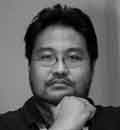Read this in The Manila Times digital edition.
First of a series
I AM probably the last person many people would expect to be speaking in the conference "Nuancing the History of the Marcos Era in the Philippines: Approaches, Evidences and Contestations" held Feb. 28, 2023. But despite the fact that I am known as an engaged academic, I am actually an advocate of a more nuanced and less radical approach in telling the history of the Marcos regime from when I was a student in college. I even picked Imelda Marcos as the topic of my BA and MA theses. My seemingly polemical approach was only a reaction to the historical distortions, especially pertaining to the victims of human rights violations. But as an academic, I never let my politics get ahead of my scholarship.
Continue reading with one of these options:
Ad-free access
P 80 per month
(billed annually at P 960)
- Unlimited ad-free access to website articles
- Limited offer: Subscribe today and get digital edition access for free (accessible with up to 3 devices)


